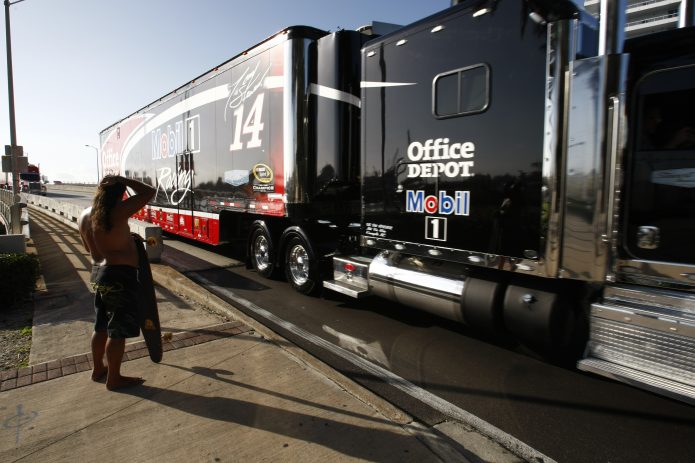The thrill of car racing has captured people’s fascination, and it’s not loosening its grip anytime soon. From its humble beginnings with the roaring steam of engines to the sleek, high-end wonders on wheels. Who can resist its pull? Legendary series such as Formula One (F1), Grand Touring, IndyCar, drag racing, and the fan-favorite NASCAR, with 3.7 million viewers in 2022, continue to dominate the sports landscape.
However, before the rubber meets the road, race cars must make it safely to the track. Towing race cars requires special care and preparation to prevent damage, making sure they arrive at their destination safe and sound.
Here, we discuss the best practices of successful race car towing:
- Choose the right trailer
As everyone gears up for the upcoming car racing events, let’s not overlook the importance of choosing the right trailer to transport your race car. Sure, you might initially think it’s just about getting those race cars from point A to point B. Well, it’s so much more than that! How you tow it matters and your equipment of choice should be reliable, sturdy, and ready to handle whatever twists and turns the road throws on the way.
So, when looking for trailers in Harrisonburg VA or wherever you reside, take into account factors such as the trailer’s type, weight capacity, and towing vehicle compatibility. Here’s a quick overview of each:
- Type: Similar to racing cars, trailers come in different types: open, enclosed, and flatbed. Each has its special features and purpose. Open trailers are good for quick loading and unloading. On the other hand, enclosed designs give the most protection from rough weather, making them perfect for long trips. And flatbed ones are flexible and can carry various types of cargo and equipment.
- Weight capacity: The trailer must exceed the combined weight of the race car, tools, equipment, and any additional gear. For instance, the minimum weight of F1 cars, including the driver, is 740kg (about 1631.42 lb), while heavier touring cars can range from 1,134kg (2500 lb) to 1,587kg (3,500 lb). Opt for a trailer with a weight capacity exceeding these specifications to minimize the risk of overloading. You can check the Gross Vehicle Weight Rating (GVWR) to ensure it can handle the load efficiently.
- Towing vehicle compatibility: The trailer must align with the towing vehicle’s hitch receiver, have sufficient weight capacity, and integrate with its braking system. Neglecting compatibility increases the risk of accidents. Select a trailer that matches the towing vehicle for trouble-free transportation to and from racing events.
For every motorsport and racing enthusiast, the journey to the track begins with choosing the right trailer. Don’t overlook the importance of this choice, as it sets the stage for a smooth-sailing and hassle-free transport for your car.
- Load and secure with care
When time for the actual towing comes, there are no room for errors. Each step demands attention to detail, from aligning the race cars on the trailer to fastening all tie-downs. Let’s get down to the details:
- Before you start loading up, double-check that those trailer ramps are snug and in place. Give them a quick clean to make sure there’s enough grip between ramps and tires. A little sweep of dirt, sand, or debris will do the trick and prevent any slippery situations.
- Once centered on the trailer, set the parking brake and chock the tires to prevent rolling. Extremely low splitters may need removing or suspending for clearance.
- Next is to firmly immobilize the race cars using multiple heavy-duty tie-down straps attached to the sturdy chassis, suspension, and frame components. Soft barriers can cushion the straps from scratching or damaging more fragile bodywork. Long straps allow suspension to travel over bumps without dislodging. Each strap should connect independently to distribute the load evenly if one fails.
- Perform a final inspection to ensure everything is properly secured. Test the trailer’s lights and brakes to confirm they’re functioning correctly and all doors and hatches are securely closed.
Loading specialized, custom cars requires tender care to protect vulnerable undercarriage components. By taking these precautions, your precious vehicle arrives at its destination, ready to hit the track with optimal performance.
- Travel safely
Now that all is set, you’re ready to hit the road. Strap in, adjust those side mirrors, and make turns in a large empty lot to learn the wider turning radius.
It’d be best to map the route in advance to ensure visibility to low overpasses, weight restrictions, steep grades, and fuel stops. Doing so best accommodates the size and needs of the rig. You don’t want to encounter unexpected challenges along the way that could delay your arrival time at the event.
- Unload with finesse
Finally, you’ve reached your destination! But this isn’t over yet. Carefully release the tie-downs in the reverse order of securing them. Slowly guide your car off the trailer, using wheel dollies or a friend’s helping hand if needed. It’s all about precision and care to ensure your race car makes a graceful exit from its temporary transport home.
Another Option
Moving your race car takes a lot of care and preparation and is indeed an art! However, if your expertise resides on the track instead of hauling a trailer on the open road, another option would be to hire professionals that specialize in shipping race cars. Coordinate with them and be sure they can make your dates. This can be a very useful alternative that will save you the stress involved if you are worried about handling this on your own.
Takeaway
Towing high-performance race cars is a delicate maneuver, requiring careful preparation between machine, truck, and driver. Every little detail counts for a smooth transit and safe arrival at the track. It’s like a pre-race warm-up; everything must be secure so that when the green flag drops, you’re off to the races without a hitch.


